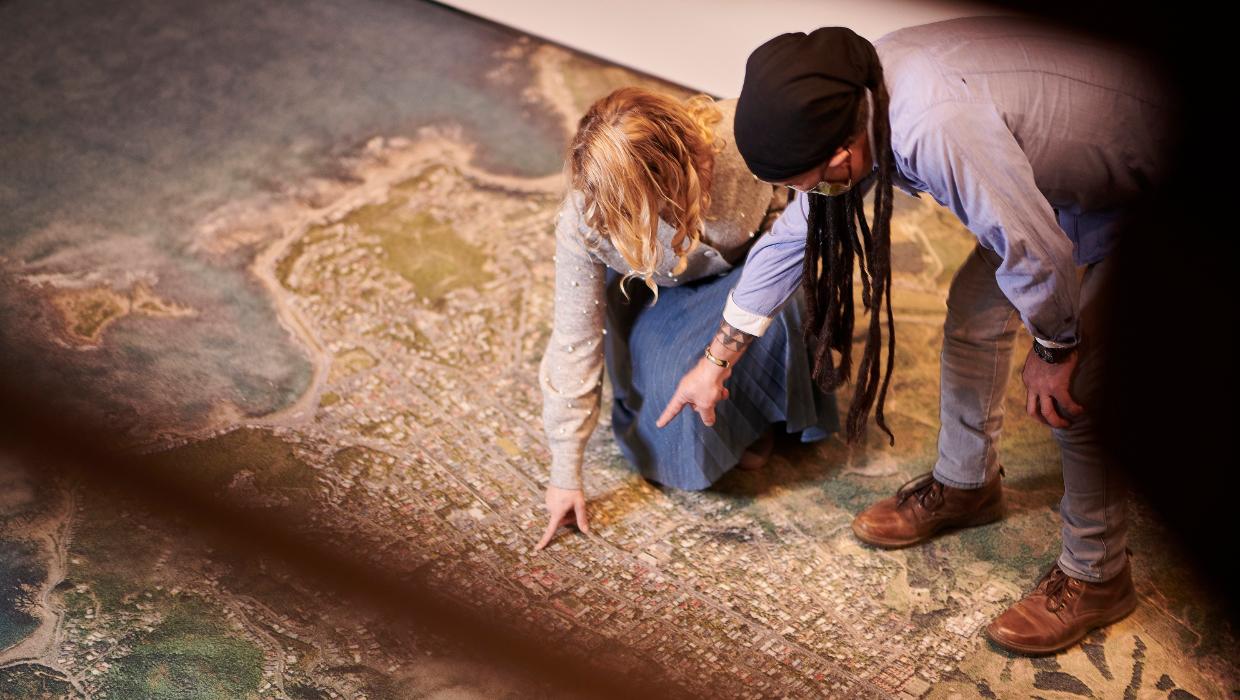There’s a kind of alchemy when school groups come to our museum. They bring a variety of backgrounds, experiences and a sense of wonder, and we ignite their curiosity. That’s the beautiful, unpredictable magic of museum learning.
Excited school groups are a familiar sight in Te Waka Huia o Ngā Taonga Tuku Iho Wellington Museum. There’s often a number of firsts: first time in a museum, first visit to the CBD, first visit to the city. The bus trip itself is often one of the highlights of the trip!
They are captivated by the carpet in our Te Whanganui-a-Tara exhibition on the ground floor. On their hands and knees, they eagerly search the aerial photograph imprinted in the carpet fibres for home, school, and the city’s other familiar landmarks. Elsewhere in the museum, there’s so much more to explore – a scuttling rat, a lion’s roar, and a plasma ball with lightning you can direct with your finger.
But there’s a deeper intent to our school visits, carefully crafted by our teachers and Learning Specialists working to support Te Ao Tangata, the refreshed national social sciences curriculum that includes Aotearoa New Zealand’s histories.
Claire, a Learning Specialist, might draw the children’s attention to two street signs from Berhampore: Waripori St and Te Wharepōuri St. They are a powerful example of how the naming and renaming of places can illustrate mana whenua and local histories. Tamariki readily share examples and observations from their neighbourhoods; Remutaka comes quickly to their minds.
In the Attic on the top floor, another Learning Specialist Kurt, often gathers students around a hīnaki (eel trap). There’s always peals of laughter when Kurt shudders at the memory of dispatching tuna (eel). Through sharing their own experiences of catching tuna, the conversation centres on relationships with the awa and moana of Te Whanganui-a-Tara where the children have spent time.
In a museum dedicated to telling local stories, learning programmes support children and young people’s curiosity about where they stand. There are layers of stories and hidden, often difficult histories to explore here beneath the carpet, behind the street signs and hīnaki, and even in the architecture of the Bond Store building.
We look for intriguing, playful, and awe-inspiring ways into serious subject matter. This winter school groups sang waiata to the vast night sky in Te Ara Whānui ki te Rangi Space Place’s planetarium, created cartoon-like postcards in response to Ayesha Green’s Folk Nationalism exhibition at Te Whare Toi City Gallery and produced their own local stories in Nuku te Ao Capital E’s OnTV studio. Through each of these experiences, children and young people used their voices to share stories that have often been missing from the public eye.
Enabling children and young people to learn from our whenua and explore their relationships to its histories contributes to the vibrancy of Te Whanganui-a-Tara. Why don’t you come with them next time? They’ll have a lot to tell you about our place and the kind of city we have been, are and could be.
